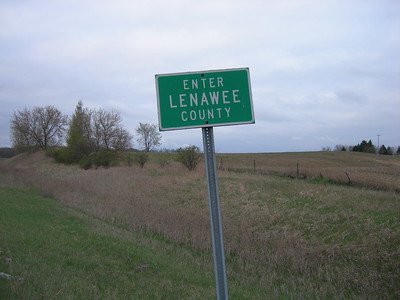Yesterday, I looked at population demographics that explain why Ann Arbor doesn’t look quite like other Southeast Michigan communities. Ann Arbor’s demographics don’t necessarily make WCC’s job harder. It means the administration has to think creatively to help area residents meet their educational goals. WCC’s resources allow it to provide education services in unserved and underserved areas. One way to do this is by expanding the WCC District.
A couple of months ago, I wrote about expanding the size of the WCC community college district, strictly in the context of raising revenue. To be clear, I do not believe WCC needs more revenue; it is the fourth-best funded community college in Michigan. If the administration cannot make WCC work on the nearly $113M it receives in total funding, there’s something profoundly wrong there.
Putting the question of revenue aside, expanding the WCC District could vastly improve economic opportunities throughout Southeast Michigan.
Looking beyond Washtenaw County
Here are some relevant facts about the populations of Lenawee and Livingston counties, using US Census Bureau data from 2019. The data include the percentage of working-age adults; the percentage of disabled working-age adults; the percentage of 4-year degree holders; the county’s labor force participation rate; the availability of broadband Internet and the poverty rate.
| County | Working Age% | Working Age disabled | 4-yr degree | LFPR | High-speed Internet | Poverty |
|---|---|---|---|---|---|---|
| Lenawee | 59.9% | 11.4% | 21% | 58.4% | 79.3% | 10.4% |
| Livingston | 61.6% | 7.0% | 34.8% | 65.9% | 85.7% | 5.0% |
So what can WCC offer residents in these counties? WCC can provide high-quality two-year vocational, occupational and general education services in Lenawee and Livingston counties. Both counties have decent manufacturing bases, so there is likely a demand for vocational and technical education opportunities.
District expansion would require building satellite campuses in each place. Lenawee and Livingston county campuses would mean that young people don’t need to leave the county to pursue a post-secondary education. That also makes it easier for young county residents to stay in their communities after graduation. Both counties present a meaningful opportunity to engage disabled working-age adults, reduce poverty and increase median household incomes. All of these strengthen not just the counties themselves, but also the Southeast Michigan area.
District expansion would keep the College focused on its educational mission. It may also facilitate more regional partnerships for both education and employment. Vocational and occupational education resources strengthen the overall area. They make it easier for businesses to locate in these counties, knowing they will find educated, skilled workers.
Expanded WCC District could benefit everyone
WCC can’t just expand its district boundaries. The voters must agree to join WCC’s district. Many communities in Lenawee and Livingston Counties are not currently aligned with a community college district, which makes WCC district expansion possible.
The WCC administration is focused on revenue to the exclusion of mission-relevant opportunities in neighboring counties. WCC’s relatively high millage rate currently also makes expansion of the WCC District hard. Lowering the overall millage rate could make the WCC District more attractive to residents of other counties. It would also enable WCC to serve a broader base while meeting regional education goals in Southeast Michigan.
Photo Credit: Jimmy Emerson, DVM, via Flickr.com











